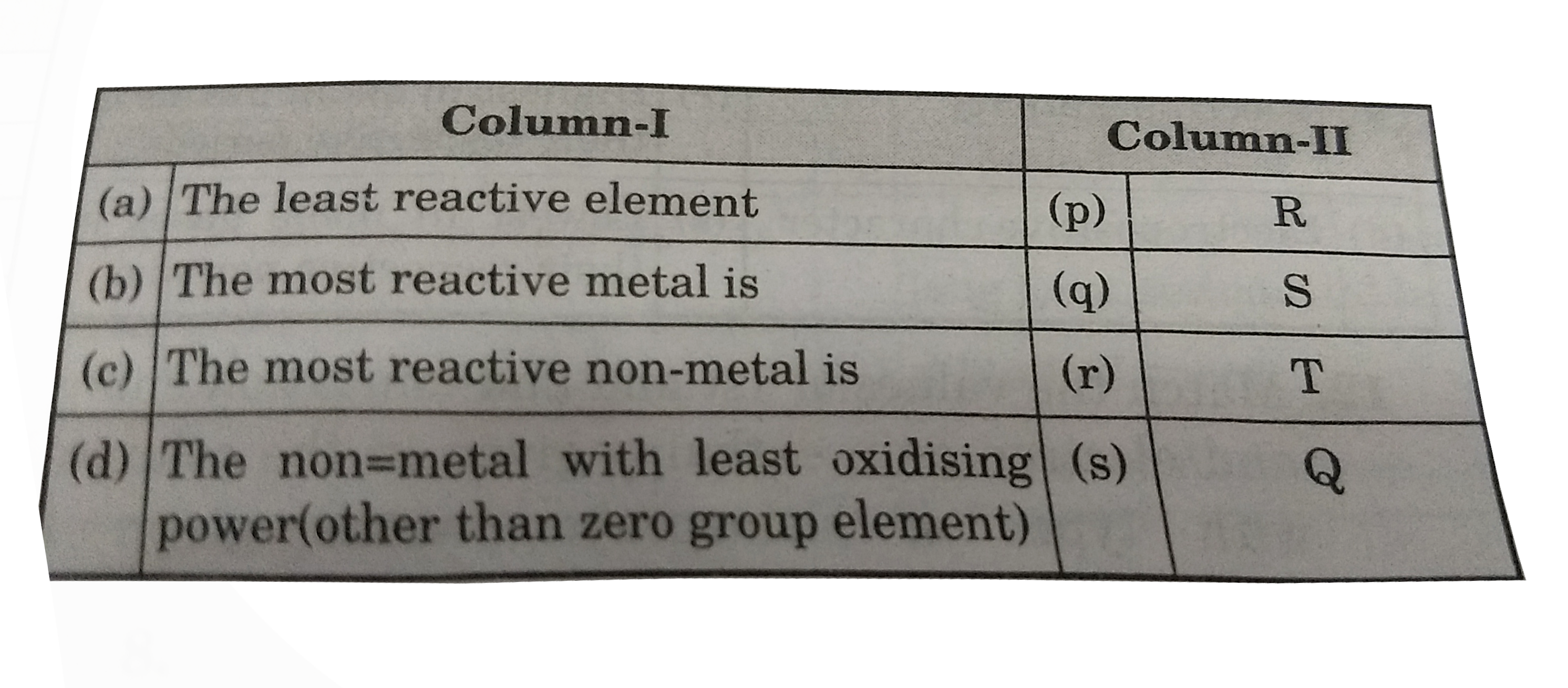The second electron gain enthalpies (in kJ mol−1) of oxygen and sulphur respectively are:
–780, +590
–590, +780
+590, +780
+780, +590
The correct Answer is:D
O−e−−−→O−2 EGE = + ve , S−e−−−→S−2 EGE = +ve
EGE is positive when an electron is added to anion (as repulsion between negative charges) and EGE is more (+ve) in case of O− because of it small size, so charge density increases & hence more repulsion.
Similar Questions
The first (ΔH1) and second (ΔH2) ionisation enthalpies (in kJmol−1) and the (ΔHeg) electron gain enthalpy (in kJmol−1) of a elements are given below:

Based on the above information match the following columns.
 View Solution
View SolutionThe electron gain enthalpy ( in kJ//mol ) of fluorine, chlorine, bromine and iodine, respectively ,are :
View Solution
Knowledge Check
- Question 1 - Select One
Second electron gain enthalpy:
Ais always negativeBis always positiveCcan be positive or negativeDis always zero - Question 2 - Select One
The electron gain enthalpy values (in kJmol−1 ) of three halogens, X, Y and Z are respectively -349, -333 and -325. Then X, Y and Z are respectively
AF2,Cl2 and Br2BCl2,F2 and Br2CCl2,Br2 and F2DBr2,Cl2 and F2 - Question 3 - Select One
The correct order of electron gain enthalpy (in kJ/mole) is
AF>ClBO>SCS>ODI>Br
The electron gain enthalpy (in kJ/mole) of Oxygen, Sulphur,Selenium and Tellurium respectively are :
View SolutionThe electron gain enthalpy (in kJ/mole) of F, O, N and C respectively are :
View SolutionThe first (ΔiH1) and second (ΔiH2) ionization enthalpies (in kJ mol−1) and the electron gain enthalpy (ΔegH)(in kJ mol−1) of the elements I, II, III, IV and V are given below

the least reactive non - metal and the most reactive metal of these are respectivelyView SolutionThe first (ΔIH1) and second (ΔIH2) ionisation enthalpies (in kJ mol−1) and the (ΔegH) electron gain enthalpy (in kJ mol−1) of a few elements are given below:

The least reactive element is :View SolutionFollowing are the values of the electron gain enthalpy (in kJ mol−1) of the formation of O− and O2− from O:
View Solution

